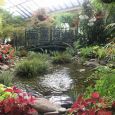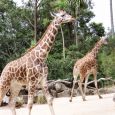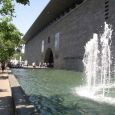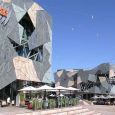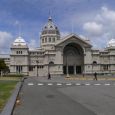Melbourne
Advertisement
By Air
Melbourne International Airport handles regular flights from all of Australia’s capitals as well as a number of direct international destinations. The airport’s three terminals are located 22kms from downtown Melbourne, just off of the Tullamarine Freeway. Skybus services and taxis offer quick and convenient transportation from the airport into the city centre.
By Rail
All interstate trains arrive at the Spencer Street Railway Station in the city centre. The Sydney-Melbourne XPT travels the 10-hour, 30-minute journey between the country’s two largest cities every day. There are several classes of seat on this popular rail line, run by Countrylink (tel: +61 3 13 22 32). The Overland operates daily between Adelaide and Melbourne, taking 12 hours to complete the trip; Great Southern Railways runs this line (tel: +61 3 13 21 47). To get from Canberra to Melbourne, you can take the Canberra Link, which involves a train ride to Wadonga and then a bus connection to Canberra.
By Bus
Greyhound and McCaffertys bus companies link Melbourne with every Australian capital and most of the other major towns and cities throughout Victoria and the rest of the country. Greyhound Australia is the biggest bus service and can connect you with every point in the country (tel: +61 3 13 14 99). All interstate buses arrive at Melbourne’s Transit Centre, just two blocks north of the central railway station. Trams and taxis can take you from the bus station to more specific points around the city.
Melbourne Museum
Australia’s largest museum is a massive and wildly interesting collection of natural history. The many interactive displays and scientific exhibitions allow visitors a hands-on experience. One of the highlights is the award-winning Aboriginal and Torres Straight Islander Centre, called the Bunjikata, where you can learn more about the natives of Australia. Other interesting exhibits include a real blue whale skeleton, a fascinating insect and butterfly collection with many living exhibits and an indoor rain forest.
Federation Square
This conglomerate of attractions is centred around a massive plaza, paved with oddly shaped cobblestones and covered in imaginative architecture. Here you can find the Australian Centre for the Moving Image and the National Gallery of Victoria. Equally impressive is the glass Atrium and other extraordinary pieces of architecture which surround the square. Events are often staged at the 450-seat amphitheatre, while other events take place in the plaza and along the Yarra River.
Melbourne Zoo
The oldest zoo in the world was built way back in 1862, and is still considered one of the best facilities around. There are over 3,000 different animals here including all the native species from Australia as well as every major creature from other parts of the planet. Best of all, the wildlife is kept in natural habitats rather than steel cages. Highlights include the lowland gorillas, tree-top monkey displays and the amazing butterfly house.
National Gallery of Victoria
This spectacular gallery in the heart of Federation Square has some of the best Aboriginal art on the continent, with some 20 rooms dedicated to Australian art made by colonists and Aboriginals. In the NGV International wing, you can see the finest collection of world art in the country. Architecturally, the building itself is also a work of art.
Royal Botanic Gardens
Adjoining the Kings Domain on the east and bounded on the north by the river are the Royal Botanic Gardens, which rank among the finest of their kind in the world. Within an area of over 40ha there are 12,000 different species of plants. The site of the gardens was decided on in 1845, and in 1852 Ferdinand von Müller, a German-born botanist, began to lay them out. The gardens were extended by his successor, William Guilfoyle. Some of the trees on the Oak Lawn are over 100 years old. The Yarra originally flowed through the gardens; then, when the river was straightened to prevent the flooding which had previously occurred every year, the bends that were cut off became lakes. In addition to the flowers and trees the park has its own fauna,
with large numbers of birds and even bats. The domed Temple of the Winds and other rotundas in the gardens show the Victorian liking for decoration. The National Herbarium was established in 1935 on the 100th anniversary of the city's foundation.
November - March


